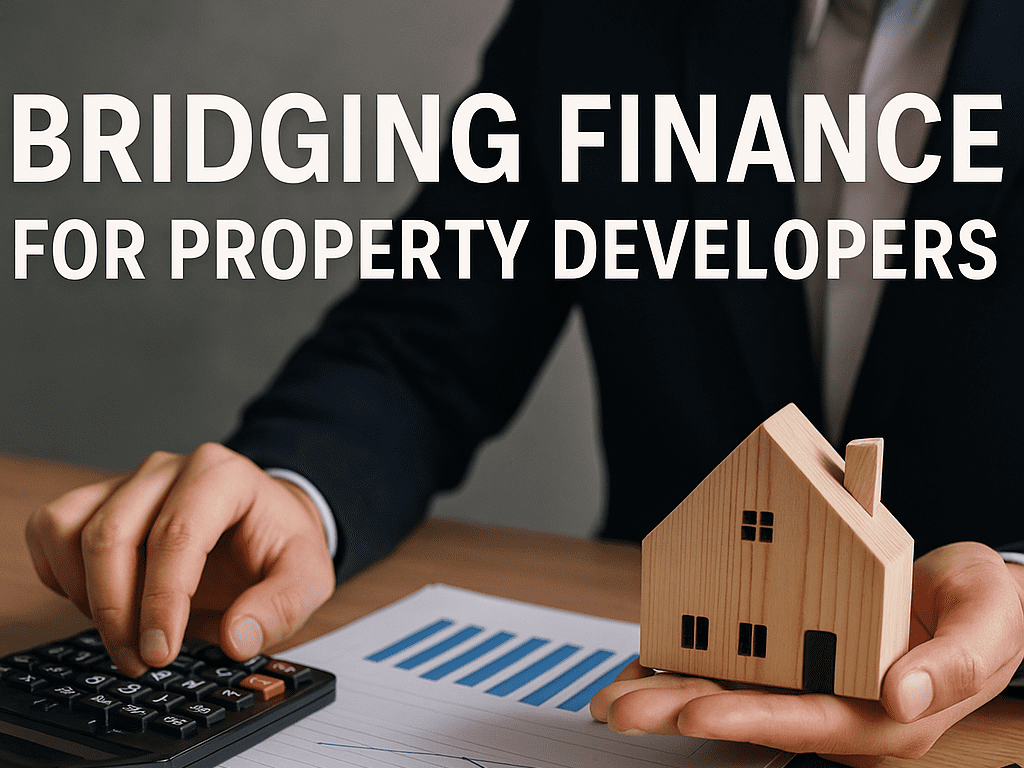With the Labour government set to overhaul planning regulations in order to pave the way for delivery on its ambitious housing targets, property development is expected to accelerate over the coming months and years. With this, developer demand for flexible short-term property finance is going to increase. As such, Excellion Capital, the boutique debt advisory and investment firm, has released a comprehensive expert analysis of the UK’s bridging loan market—offering clarity for investors seeking the right funding solution for their specific needs.
Which bridging loan do you need? An expert’s view for property investors
With the Labour government set to overhaul planning regulations in order to pave the way for delivery on its ambitious housing targets, property development is expected to accelerate over the coming months and years. With this, developer demand for flexible short-term property finance is going to increase. As such, Excellion Capital, the boutique debt advisory and investment firm, has released a comprehensive expert analysis of the UK’s bridging loan market—offering clarity for investors seeking the right funding solution for their specific needs.
What is a bridging loan?
Bridging loans are a valuable tool for property investors and developers who need fast, temporary access to capital. They are short-term loans used to bridge the gap between two financial transactions. Example uses include purchasing one property before selling another, or funding the refurbishment of a property in order to then sell it.
But selecting the right bridging product is essential because loan types differ significantly based on property use, borrower profile, and a lender’s tolerance for risk. Below, Excellion Capital outlines the the products available to investors depending on their precise requirements,
1. Bridge to Let
A bridge-to-let loan is designed for property investors or landlords who intend to refinance onto a buy-to-let (BTL) mortgage once certain conditions are met. Initial bridging finance is provided to allow the investor to purchase a property quickly – often one that wouldn’t qualify for a traditional BTL mortgage at the outset..
Once the property is renovated, let, or meets lending criteria, the borrower can transition to a long-term buy-to-let mortgage. As such, the exit strategy from the bridging loan is the BTL mortgage refinance, rather than a sale of the property.
The key benefits is the ability for investors to quickly unlock future rental income potential
2. Bridge to Development
Ideal when an investor needs to secure land or property prior to obtaining full development finance. It effectively bridges the gap between acquisition and development, thus giving developers time to arrange planning permission, detailed costs, and satisfy lender requirements for full development funding.
Such loans are intended to work on a short timeline of 3-12 months, are secured against the site or property, and the exit usually comes via development finance
3. Second Charge Equity Release
A second charge bridging loan is taken out when an existing primary loan, such as a mortgage, already exists on an asset. It is secured against the existing equity in a property, and the lender takes second priority behind the senior, or primary, lender when it comes to repayment. This type of loan allows property owners to unlock equity without selling the asset, remortgaging, or interfering with their primary loan. This equity can be used to finance another acquisition. However, it is important that the senior lender agrees to the loan.
4. Development Exit Bridge
Designed to enable property developers to exit development finance once a project has reached practical completion but before the property has been sold or let. Usually more affordable than full development finance, in essence it gives the developer time to market the completed property and thus make their full exit or start generating income against which they can take out further, more suitable financing.
5. Refurb Bridge
Used to finance property renovations – either light (non-structural upgrades such as kitchens or bathrooms) or heavy refurbishment (structural work, extensions, or change of use) – and enable investors to add value to and reposition assets for resale or refinance. Lenders don’t usually have to monitor Refurb loans too closely. Essentially, these loans enable an investor to increase the value or mortgageability of an asset before seeking further financing or, of course, selling.
6. Acquisition Bridge
Used to acquire a property quickly with the intention of moving onto long-term investment finance (such as a buy-to-let or commercial investment mortgage) once it has better mortgageability or is ready to be let.
Such a loan is ideal for investors, landlords, and commercial buyers who need speed or flexibility at the point of purchase but then plan exit onto investment finance which will enable them to keep the property for rental income or other forms of long-term income.
7. Auction Finance Bridge
When a property is purchased at auction, the buyer typically has 28 days with which to pay the agreed price. Auction finance bridging loans are specifically designed to help buyers honour this tight deadline which can otherwise be impractical through a more traditional mortgage. The loan is usually repaid through the mortgage eventually gained.
Robert Sadler, Vice President of Real Estate at Excellion Capital, commented: “With planning reform on the horizon and demand for new housing set to rise, developers are increasingly seeking flexible funding options that match the pace and complexity of their projects.
Bridging finance is not one-size-fits-all. The key to successful property investment lies in choosing the right loan structure to match your objectives. In terms of pricing, investors can expect rates starting at 0.70% per month and up to 0.80% LTV. At Excellion Capital, we work closely with our clients to understand the nuances of each deal—whether that’s securing land pre-planning, funding a heavy refurbishment, or bridging to a long-term investment loan. Each bridging product serves a specific purpose, and selecting the wrong one can compromise timelines, profitability, or refinancing potential. Our role is to cut through the complexity and structure the most efficient, cost-effective solution—ensuring that our clients move quickly without sacrificing strategic foresight.”











